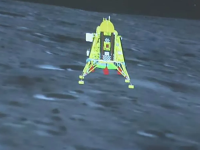Close encounters with UFOs described to U.S. government committee
Author of the article:Bloomberg News
Bloomberg News
Elizabeth Kim and Amelia Davidson
Published Jul 26, 2023 • Last updated 5 days ago • 5 minute read
Three former military officers described to Congress disturbing encounters with high-tech, unexplained flying objects and one of them claimed the US government is secretly holding on to extraterrestrial wreckage.
The Pentagon denies that they have a destroyed alien spacecraft.
Ryan Graves, a former F-18 pilot for the Navy, said that he witnessed advanced flying objects demonstrating complex maneuvers.
“The sightings were so frequent that they became part of daily briefs,” Graves said in an opening statement to a Wednesday congressional hearing. He urged the government to stop hiding such reports through “excessive classification” and disclose what it knows.
Wednesday’s hearing by a subcommittee of the House Oversight Committee comes amid a surge in interest in Congress about unidentified aerial objects and whether they constitute a security threat. The Senate is considering a bipartisan measure that would force the government to disclose reported sightings of such objects and what it learns about them.
The measure, proposed by Senate Majority Leader Chuck Schumer and other lawmakers, would be an amendment to the National Defense Authorization Act. It would declassify government records related to unidentified aerial phenomena. Senators hope to pass the bill with the measure Thursday, but it would need to be approved by the House before going to President Joe Biden’s desk.
“Sunlight is the best disinfectant,” Schumer told reporters last week. “It’ll be very helpful to the American people to see exactly what’s there, because otherwise, there are all sorts of rumours flying around.”
Wednesday’s hearing drew wide interest, with a line that filled to get into the room stretching down two hallways of a Capitol office building 30 minutes before it began. An applause sounded in the room as the three witnesses were introduced by the subcommittee.
“This is an issue of government transparency,” Representative Tim Burchett, a Tennessee Republican, said as the hearing got underway. “We’re going to uncover the cover-up.”
Graves said military and civilian air crews are making “credible reports” of unidentified objects in US airspace “with regularity.”
Retired Navy commander David Fravor described an encounter with a “white Tic Tac shaped object” after launching his fighter jet from the USS Nimitz aircraft carrier.
“There were no rotors, no rotor wash, or any visible flight control surfaces like wings,” he testified.
He said the device maneuvered abruptly, accelerated and changed direction rapidly. He said it “defied material science.”
“The technology that we faced is far superior to anything we had,” he testified. Afterward he told a fellow service member that “I’d like to fly that.”
A retired US intelligence official told the House committee the government is running a secret program to assess wreckage from unidentified aerial objects.
“I was informed, in the course of my official duties, of a multi-decade UAP crash retrieval and reverse engineering program,” David Grusch, who says he spent 14 years as an intelligence officer with the US Air Force and, later, the National Geospatial-Intelligence Agency, said in written testimony submitted to the panel.
Grusch, who has official whistleblower designation, also spoke about intimidation measures he faced when looking to speak out about extraterrestrial phenomena. “I call it the Ministry of Terrorism,” he said of systems in place to keep members of the military from publicly discussing the topic.
The Defense Department created the All-Domain Anomaly Resolution Office in 2022 to investigate and keep records of sightings.
“The All-domain Anomaly Resolution Office (AARO) has not discovered any verifiable information to substantiate claims that any programs regarding the possession or reverse-engineering of extraterrestrial materials have existed in the past or exist currently,” Susan Gough, a Pentagon spokeswoman, said in an email.
An author who has researched the claims is also skeptical the objects will turn out to be of extraterrestrial origin.
“Across the last 75 years there’s just not a lot of evidence to me that the government could have kept that secret that long, either on purpose or by accident,” said Garrett Graff, author of UFO: The Inside Story of the US Government’s Search for Alien Life Here — and Out There.
More likely, he said, the flying objects are man-made.
“There are UFOs and UAPs in that the US government has no idea what they are” said Graff, who did not attend the hearing. He believes that these UAPs are “likely Chinese, Russian, Iranian or other advanced military technology being tested around the borders of the United States.”
As of August 2022, the Defense Department had compiled 510 reports of such unidentified objects. Of those, 163 were determined to be balloons, 26 were drones or other man-made devices and six were birds, litter or weather events. The other 171 are categorized as “unattributed” and require additional research.
In testimony to a Senate panel in April, Sean Kirkpatrick, the director of the All-domain Anomaly Resolution Office, said they actively pursue reports but have so far not found evidence of extraterrestrial visitors.
“I should state clearly for the record that in our research AARO has found no credible evidence thus far of extraterrestrial activity, off-world technology, or objects that defy the known laws of physics,” Kirkpatrick testified.
Representative Robert Garcia, a California Democrat, said the many reports warrant further investigation and witnesses need to be encouraged to report what they’ve seen.
“Because of the stigma around reporting these incidents, we still don’t have a complete picture of what’s going on,” Garcia said. “That’s a real problem.”
“The sheer number of reports, whistleblowers, and stories of unidentified anomalous phenomena raise real questions and warrant investigation and oversight,” Garcia said. “Pilots have reported encounters for years.”
Earlier this week, House Speaker Kevin McCarthy took a skeptical view of the claims of a Pentagon cover up.
“I think if we’d have found a UFO, I’d think the Department of Defense would tell us that they’d probably want to request more money,” McCarthy told reporters.
“I’d love to see whatever facts and information we have,” he said, adding that he is “very supportive of letting the American people see what we have.”
— With assistance from Billy House and Zach C. Cohen.
Three former military officers said they saw unexplained flying objects and one claimed the U.S. is holding on to extraterrestrial wreckage.

torontosun.com

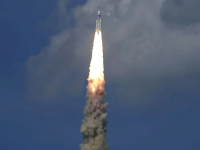

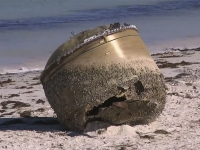

![OSIRIS-REx-spacecraft-robotic-arm[1].jpg OSIRIS-REx-spacecraft-robotic-arm[1].jpg](https://forums.canadiancontent.net/data/attachments/17/17124-b8236d315a1287721d8fd320e168c32a.jpg)
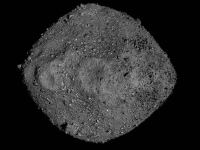





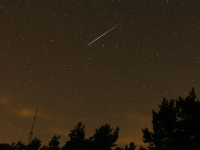

![20230810200816-64d57e1cbe70af9ac16ff322jpeg-scaled-e1691755339383[1].jpg 20230810200816-64d57e1cbe70af9ac16ff322jpeg-scaled-e1691755339383[1].jpg](https://forums.canadiancontent.net/data/attachments/17/17222-9fe8f9937c18442ccdade4e4e23c60ea.jpg)

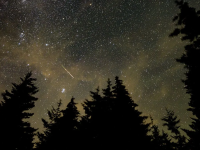

![russia-moon-mission[1].jpg russia-moon-mission[1].jpg](https://forums.canadiancontent.net/data/attachments/17/17311-5246b259da2a29514730962b65399f65.jpg)

